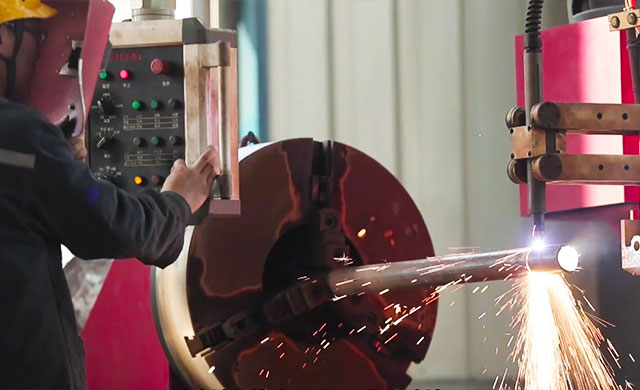
Dec . 26, 2024 13:39
Back to list
Gas Distribution Station Overview and Operational Insights
Gas Distribution Stations An Essential Component of Energy Infrastructure
Gas distribution stations serve as a critical link in the energy supply chain, facilitating the transportation and distribution of natural gas from larger transmission networks to end-users, including residential homes, commercial businesses, and industrial facilities. These stations play a vital role in ensuring that natural gas, which is considered a cleaner alternative to other fossil fuels, is available for heating, cooking, and a variety of industrial processes.
Understanding Gas Distribution Stations
A gas distribution station typically involves several key components, including pipelines, pressure regulators, and metering systems. The process begins with high-pressure natural gas transported through transmission pipelines. Upon reaching a distribution station, the gas undergoes a transformation where its pressure is reduced to a safer and more manageable level for distribution to consumers.
Pressure regulators are crucial in this process, ensuring that the gas is delivered at a consistent pressure that meets safety standards. If the pressure is too high, it could jeopardize consumer safety and potentially lead to catastrophic failures in gas appliances. Therefore, maintaining appropriate pressure levels is a top priority for gas distribution stations.
The Role of Technology
Modern gas distribution stations are increasingly utilizing advanced technology to enhance their efficiency and safety. Automated monitoring systems can detect leaks, ensure proper pressure regulation, and manage flows within the network. These smart technologies provide real-time data, allowing operators to make informed decisions and respond quickly to any issues that may arise.
Moreover, the integration of artificial intelligence and machine learning assists in predictive maintenance, reducing downtime and enhancing the overall reliability of the gas supply. This technological evolution is particularly important as the demand for natural gas continues to rise globally.
محطة توزيع الغاز

Environmental Considerations
As the world grapples with climate change and the urgent need for sustainable energy solutions, the role of natural gas in the energy landscape has become increasingly significant. It is often viewed as a transition fuel, bridging the gap between more polluting fossil fuels such as coal and cleaner renewable energy sources.
Gas distribution stations must implement environmentally sustainable practices to minimize their ecological footprint. These practices can include regular maintenance to prevent leaks, utilizing renewable energy sources for operational needs, and increasingly incorporating biogas into the distribution network as a renewable alternative.
Challenges and Future Directions
Despite their essential role, gas distribution stations face several challenges. Aging infrastructure in many regions requires significant investment for upgrades and repairs. The balance between expanding access to natural gas while ensuring safety and environmental protection is a delicate one. Additionally, fluctuations in natural gas prices, driven by geopolitical tensions or changes in energy policy, can impact the economic feasibility of maintaining and expanding distribution networks.
Looking ahead, the paradigm of energy distribution is shifting. With the increasing emphasis on reducing greenhouse gas emissions, there is potential for gas distribution systems to adapt by integrating hydrogen and renewable natural gas into their infrastructures. Hydrogen, for instance, can be transported through existing pipelines with some modifications, presenting an opportunity to leverage current infrastructure while transitioning to cleaner energy sources.
Conclusion
Gas distribution stations are a linchpin in the global energy network, ensuring that natural gas reaches homes and businesses safely and efficiently. As technology advances and environmental concerns mount, these stations must evolve to meet the challenges of a changing energy landscape. By investing in infrastructure improvements and embracing innovative solutions, gas distribution stations can continue to play a vital role in the energy transition while contributing to a more sustainable future. The road ahead will require collaborative efforts among governments, energy companies, and consumers to navigate the complexities of energy demand and environmental stewardship.
Latest news
-
Safety Valve Spring-Loaded Design Overpressure ProtectionNewsJul.25,2025
-
Precision Voltage Regulator AC5 Accuracy Grade PerformanceNewsJul.25,2025
-
Natural Gas Pressure Regulating Skid Industrial Pipeline ApplicationsNewsJul.25,2025
-
Natural Gas Filter Stainless Steel Mesh Element DesignNewsJul.25,2025
-
Gas Pressure Regulator Valve Direct-Acting Spring-Loaded DesignNewsJul.25,2025
-
Decompression Equipment Multi-Stage Heat Exchange System DesignNewsJul.25,2025

